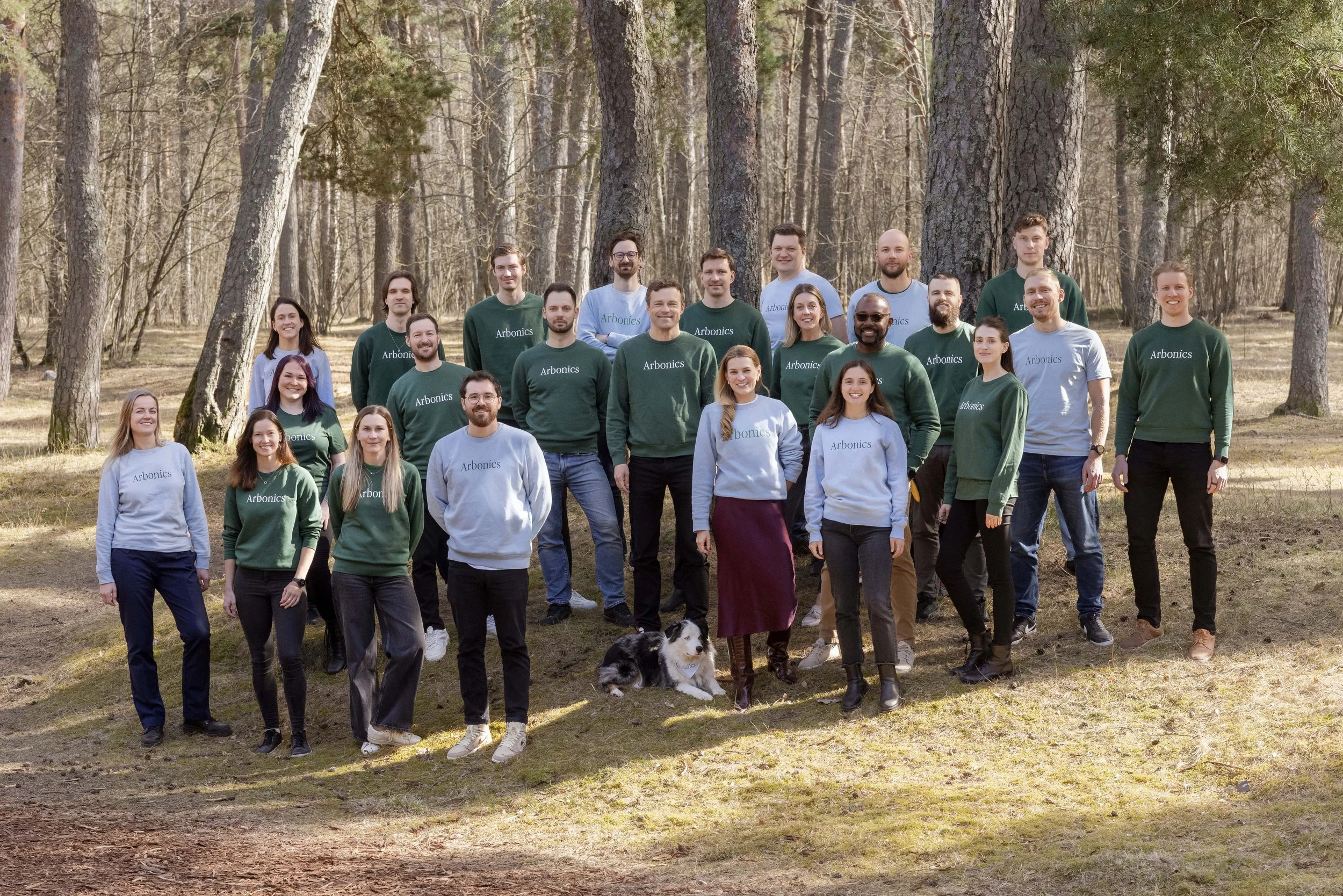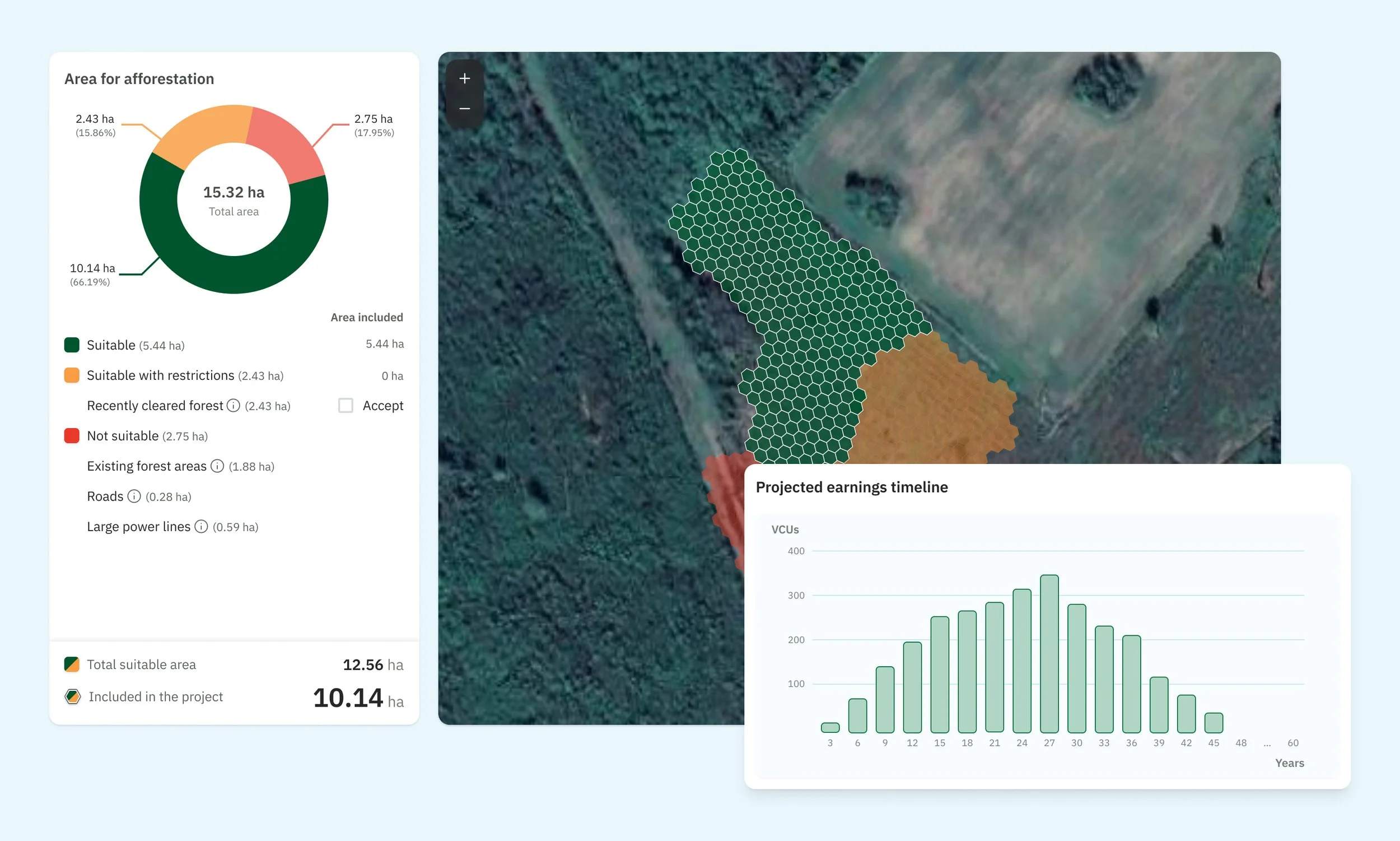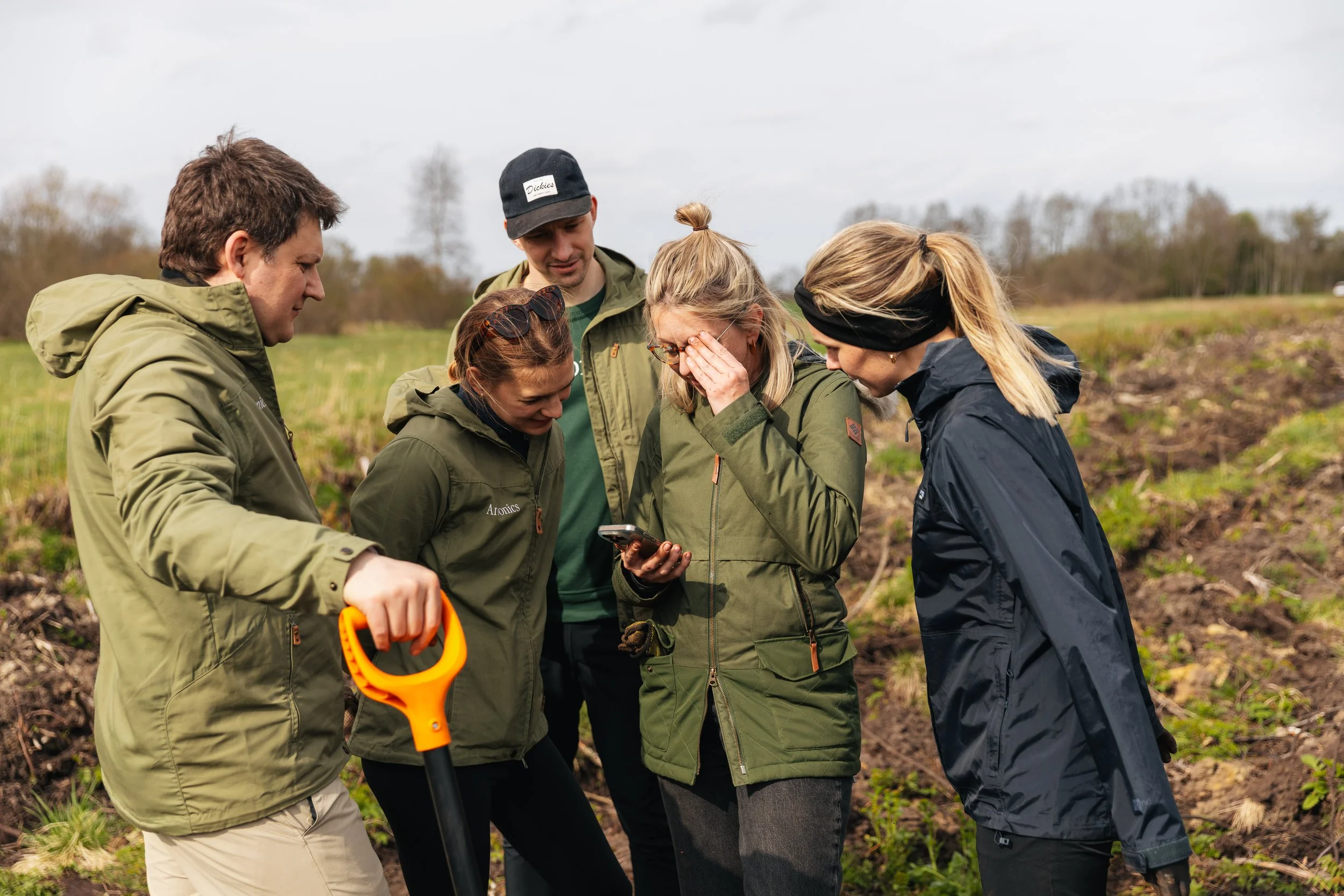Interview with Arbonics: Building a New Forest Economy with Digital Twin Technology
Across Europe, more than 14 million hectares of land remain underutilized, land that could support climate action but often lacks the tools, finance, and knowledge to enter carbon markets. Arbonics is working to change this. Their digital twin platform brings together over 50 layers of data, from satellite imagery to soil and species models, to assess carbon potential, track forest growth over time, and connect landowners with buyers seeking transparent, high-quality projects. By combining technology with on-the-ground partnerships, Arbonics is helping to scale afforestation and impact forestry solutions and laying the foundation for a new forest economy.
👉 In this ‘Member Spotlight: Ask the Nature Tech Expert’ interview, Arbonics shares how they are breaking down barriers for landowners, building trust in carbon markets, and setting ambitious goals for the future. Read the full conversation below.
Arbonics Full Team Photograph
About Arbonics
Q. Please introduce Arbonics and describe the key challenge you are addressing within the European forest carbon and nature markets. What inspired the founding of Arbonics, and what makes your approach unique in the nature tech space?
Over 14 million hectares of land in Europe sit underutilized, land that could support climate action. But many landowners often lack the knowledge, tools, and finance to enter the carbon markets. At the same time, organisations looking to fund forest carbon projects often struggle to find credible options that are close to home.
Our founders saw a way to remove these barriers, and asked: what if technology could do it at scale? And so, we set out to build a digital twin platform: a tool that brings together over 50 layers of data, from satellite imagery to soil and species models, to assess the carbon potential of a specific land area and track how it changes over time. This makes it easier for landowners to understand how they could engage in climate action and carbon projects. For buyers, it offers the transparency they need to support high-quality local projects.
The Carbon Opportunity Assessment provides landowners with a clear view of their land’s suitability for afforestation and how much income they could earn over time.
Q. How does Arbonics leverage technology to build a “new forest economy” in Europe? Could you explain your digital twin platform and how it helps scale forest carbon projects?
Arbonics core technology is structured to assess the current state of any plot of land, estimate its future carbon potential and monitor its performance over time. Our digital twin creates a living, data-rich model of every project site. It combines remote sensing, ecological modelling, and regulatory criteria to automatically assess key factors like land use, forest cover, and soil type. These automated checks allow us to determine project eligibility in minutes, a process that previously took months.
As the project develops, remote sensing continues to track changes on the ground, providing real-time updates on forest growth. This means validation and monitoring happen continuously in the background, with no need for constant manual input.
In doing so, we reduce costs, shorten timelines, and scale access to forest carbon projects, laying the foundation for a new forest economy where nature generates long-term value.
Q. What is the current scale and geographic focus of your operations, and how have you engaged with landowners across Europe?
We are currently active in Estonia, Latvia, Lithuania, Finland, Sweden, and the UK, with plans to expand further in Europe. So far, our technology has analyzed over 500,000 hectares of land and we have onboarded 450+ landowners, ranging from small family landowners to institutional forest owners.
Our engagement approach combines direct sales with partnerships: working closely with landowner associations, planting partners, and financing providers. We ensure that landowners receive clear forecasts of their revenue potential and access to funding and technical support, helping them transition to more sustainable, carbon-positive land management.
Approach and Impact
Q. Could you describe the two main products or solutions Arbonics offers: afforestation on idle land and improved forest management? How do these contribute to carbon sequestration and biodiversity outcomes?
We offer two key solutions:
Afforestation: Planting newforests on degraded land
Impact Forestry: Improving the management of existing forests for carbon, biodiversity and timber balance.
Both solutions are designed for long-term carbon storage and biodiversity restoration.
Afforestation creates new carbon sinks and reintroduces native tree species. As the forest develops, it attracts pollinators, birds, and fungi, which over time, build complex ecosystems. Impact Forestry, which protects forests at risk of being clearcut, increases carbon sequestration and conserves existing habitats. In some cases, corridors form between protected areas, which connect habitats and enable species movement.
Our platform recommends species mix, planting density, and harvest schedules for maximum climate and biodiversity benefits. We avoid monocultures and promote mixed native species, to strengthen long-term ecosystem health.
Q. How do you use data layers such as satellite imagery, soil data, and ground truthing to assess and monitor forest carbon potential?
We use a mix of data sources. Our platform overlays 50+ data layers, including high-resolution satellite imagery, soil metrics and species-specific local forest growth models. This allows us to assess each plot for legal eligibility, ecological suitability, and carbon potential.
We complement remote sensing with on-the-ground data collection, verifying forest composition, growth rates, and site conditions. This hybrid approach ensures that our carbon projections are not only scientifically robust but also compliant with international verification standards, like Verra.
Q. What are some of the key challenges you face in navigating the fragmented ownership rights and complex regulations across different European countries?
60% of European forests are privately owned and almost 90% of private forest holdings are smaller than 10 hectares. From the policy perspective, there are differences in local regulations as well as data availability. This creates some complexity for carbon project development, from engagement with landowners to aligning with local forestry laws.
We address this by building a scalable platform that helps us not only reach landowners but to ensure that we include various local data layers and legal requirements into our assessment mechanism. In addition to this, we stay engaged with processes like Article 6 negotiations and EU CRCF rules, to ensure our projects remain future-proof and aligned with the most robust standards.
Business Model and Market
Q. How does your business model work in terms of collaboration with landowners and revenue generation through carbon credit commissions? What value do you offer landowners as a service provider?
Our model is simple: we manage the full lifecycle of carbon projects, from land eligibility assessment to credit issuance and sale, and take a percentage of issued carbon credits as our fee. This means our success is directly tied to project quality and impact.
For landowners, we provide end-to-end support: from feasibility assessment to ongoing project monitoring. This reduces their risk and costs, shortens timelines and opens access to a new revenue stream that was previously out of reach.
Q. How do you see your role evolving in connecting carbon credit buyers with verified forest carbon projects? How are you addressing visibility and investment demand?
We act as a bridge between landowners and buyers.
By digitising project data, we make carbon projects and their impact more transparent and attractive to corporate buyers who need to meet voluntary or compliance-aligned goals.
We’re actively engaging with large European companies to pre-reserve credits from our pipeline, providing them with visibility into project performance before credits are issued. As the market matures, we see ourselves as a trusted platform for verified, high-quality nature-based assets in Europe.
Community, Collaboration, and Ambitions
Q. What motivated Arbonics to join the Nature Tech Collective, and how do you see the collective supporting your goals?
We joined the Nature Tech Collective to collaborate with like-minded innovators working to scale credible, tech-enabled climate solutions. We are already working closely together with some of the nature data providers that are part of the NTC. This community gives us access to shared knowledge, industry standards and potential partnerships that help drive both innovation and adoption of nature-based solutions. It also helps us collectively advocate for better policy and market frameworks for nature tech.
Q. What kinds of collaboration or knowledge sharing with other nature tech developers and ecosystem players are particularly important to Arbonics?
We value collaboration in three areas:
Data sharing, to improve modelling accuracy and MRV
Verification and standard-setting, to align on robust methodologies
Financing, to access corporate and other types of funding
Working with universities, NGOs, and fellow startups enables us to strengthen our impact while reducing duplication of efforts.
Q. What are your main ambitions and milestones for 2025 and beyond? How do you plan to scale your impact and expand coverage across European forests?
In 2025, we aim to expand our Impact Forestry product into new markets, roll out our landowner self-service portal, and register new projects under Verra. Longer-term, our goal is to analyse millions more hectares, onboard thousands of landowners, and scale forest carbon removals in Europe. We are on a mission to empower forests to have an additional 1 gigatonne CO2e impact in the climate fight.
Personal and Practical
Q. What insights or lessons have you gained from working closely with diverse landowners, from smallholders to institutional investors?
We’ve learned that building trust is key. Smallholders need easy-to-understand, low-risk pathways into carbon markets, while institutional investors require rigorous data and long-term financial modeling.
Our role is to meet both where they are. We do this by building relationships, providing transparency, and ensuring that carbon projects deliver real value beyond short-term revenue.
Q. What advice would you offer to other startups or organizations aiming to scale nature-based solutions in the fragmented European landscape?
Don’t underestimate the importance of local work and landowner engagement. Each country has its nuances, so it’s important to build strong relationships with landowners and design solutions that work for them. Technology can scale solutions, but trust and relationships make them stick.
Q. Finally, what inspires your team at Arbonics as you work toward a scalable and transparent forest carbon market?
We are inspired by the land, and forest owners who care for their land and forests daily. We are also driven by the rich biodiversity that European forests sustain. We recently put up trail cameras in our afforestation sites and are so excited to see various species such as European lynx, elk, wild boar visiting our sites.
Every project we develop helps protect and restore ecosystems while creating new opportunities for landowners to contribute to climate action. Knowing that our work strengthens these connections between people, forests, and the planet inspires us every day.
Explore how Arbonics uses technology and collaboration to accelerate forest carbon projects, learn more on their website and connect with them on LinkedIn.







